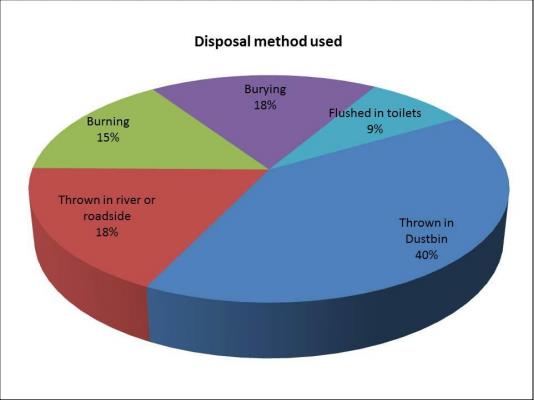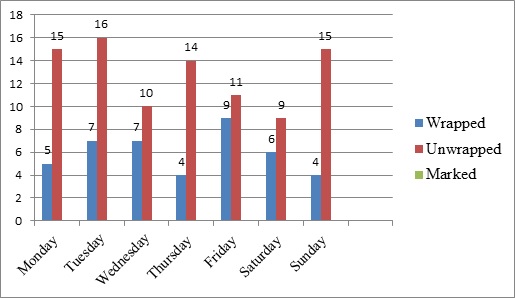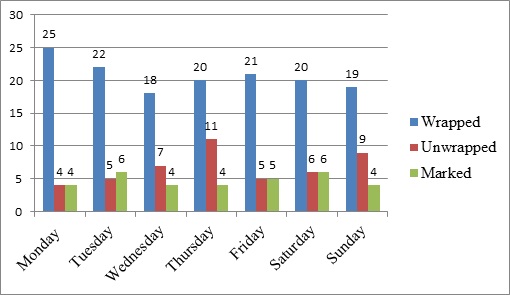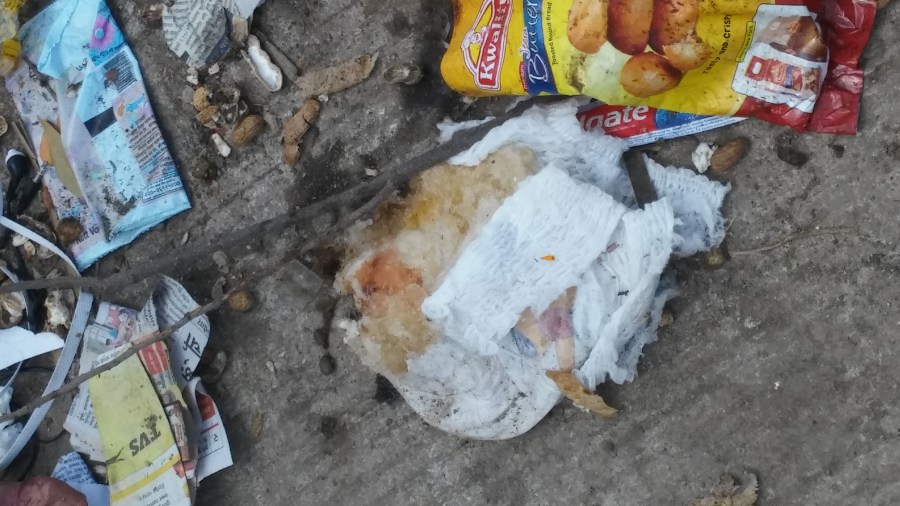A guest post by Riya Gandhi. She is a Master’s student in Ecology, Society and Sustainable Development from MIT WPU. She works at the intersection of sustainability and design. An avid sportsperson, Riya is always up for a game of volleyball or badminton.
I recently got the opportunity to select a topic of my choice to study as a subject in my University curriculum. After days of brainstorming and exploring different topics, a very simple yet significant topic struck me—sanitary pads. Specifically, how we dispose them. I wondered how people dispose them and whether this has affects the environment.
I was shocked to find out it does!
More importantly, I discovered that one change in how we dispose used pads—requiring almost no effort on our part—could profoundly benefit lives and the environment!
How is sanitary waste commonly tackled in India?
Waste disposal and its management are colossal problems today. Poor infrastructure notwithstanding, our behaviour—in terms of an ever-increasing “want” for things and a flippant attitude towards the waste this generates—is a major hurdle for sustainable waste management models. Sanitary waste management is no different.
As a society, we have made great strides in discussing menstrual hygiene and women’s health. In India, perception towards menstruation has evolved over generations. However, even though the worldviews towards this topic has improved with awareness and acceptance, it remains a taboo in many societies, making it hard to address it at policy levels.
This taboo is a big reason for improper sanitary waste management. Cultural beliefs and misconceptions persist, which often prevent deliberation around rules and processes for sanitary waste disposal.
This directly translates to the way used sanitary pads are disposed. Commonly, they are flushed, burnt, buried in the grounds or thrown into streams/streets.

Case study: How is sanitary waste disposed in different living spaces?
I conducted a short comparative study to understand the ground realities of the disposal patterns. I selected two locations- an urban slum and a residential complex. The reasons for selecting these locations-
- Difference in socio-economic status
- Difference in education levels
- Awareness levels
I wanted to find out if these factors influence sanitary waste disposal behaviors. There were three main categories of disposal at source: wrapped sanitary waste, unwrapped sanitary waste and marked sanitary waste.
The two locations studied are an urban slum and a residential complex in Pune, Maharashtra.


The study revealed interesting results:
- The sanitary waste is mostly unwrapped at disposal regardless of the living space.
- Hardly any sanitary waste is marked even at the residential complex, which has better education and awareness levels than urban slums.
- The unwrapped sanitary napkins percentage at urban slums is much higher. These populations are likely to be less aware about safe disposal methods and also have a bigger taboo associated with menstruation. Unfortunately, urban slum dwellers are also possibly the most affected demographic from improper waste disposal!
Poorly disposed used pads can be harmful to the environment and public health…
Common disposal methods, including flushing, burning, burying and openly throwing have obvious consequences on the natural environment. One of the major reasons for proper disposal of sanitary waste is the product itself. The wrappers are mostly made up of single use plastic, increasing the environmental stress. Incineration is considered the best option to treat sanitary waste, even though this method has its own drawbacks pertaining to air pollution.

While we see the potential environmental harm improper disposal can cause, many are oblivious to the various people involved in the waste-disposal chain. These are the rag-pickers who collect your waste from your residence, the workers who segregate your waste and other people involved in the process.
When these rag-pickers have to sort through openly disposed sanitary pads, we expose them to a plethora of germs that can cause severe infections. Sometimes, it can even be fatal.
Look at these images. Would you touch these with no protective gear?
Will policies and rules make the difference? Maybe…
One of the biggest drawbacks in India is the lack of proper policy and guidelines for menstrual hygiene management and disposal patterns. Very little literature is available on the disposal and management methods of sanitary waste. This is a glaring loophole in our waste management system.
Sanitary wastes are categorized as solid wastes and are governed under India’s Solid Waste Management Rules 2016. The policy doesn’t treat sanitary waste as hazardous waste.
Ideally, sanitary waste must be categorized under biomedical waste and handled as per the Biomedical Waste Management Rules 2019, given the high risks for environmental pollution and the health of rag-pickers.
How should we be disposing used pads?
Within the current policy framework, the Solid Waste Management Rules, 2016, state that any sanitary product needs to be wrapped properly in newspaper or the sanitary bag.
This simple step goes a long way! These wrapped products are easily identified by the rag-pickers and handled accordingly.
Having to wrap these products also makes us more conscious about what we are doing—we aren’t going to nonchalantly toss a used pad into the street if we have a nagging voice in our heads saying, “Wrap it first!”
How much of a difference can wrapping make?
First, wrapping and marking your waste can protect the lives of rag-pickers. After I interacted with the rag-pickers working in the two sites of my study, it was clear that their voices are often ignored. Seeing them work in these hazardous conditions made me realize how essential it is to be conscious about our waste.
Second, wrapping the waste helps identify it and treat it correctly through incineration. Openly disposed pads often end up in landfills, which increase risk of diseases. It may get mixed with small water streams, with soil or food that birds and animals consume, directly affecting the environment and wildlife.
Minor negligence can completely change the way waste is treated and disposed. Eventually, it comes back to haunt us as contaminated water, food and diseases. Wrapping your sanitary waste upon disposal should be a way of living and not an imposed rule.
Conclusion…
Some practices are very simple; yet they have a significant effect on our lives. This article isn’t about the choice of your menstrual product, rather the emphasis on being conscious about its disposal.
As environmentally conscious citizens, many of us take it into consideration while making purchases in our daily lives. What most of us overlook is where the waste from those eco-friendly purchases end—what is its condition and how is it treated?
We may choose the most environment friendly product but we don’t pay attention to what happens once it’s discarded, we can cause great harm. We can blame the lack of policies and rules, curse the illiteracy in our surrounding, or we can be conscious at our end.
This is the essence of being eco-intelligent. What will you choose to do?



Sanitary waste needs to be curtailed. Both the consumers & rag pickers have to be made aware of it by educating them about the harmful effects.
These days, In addition to the pads I also see masks are strewn on the sides of the road which is equally hazardous to public health & the environment.
LikeLiked by 1 person
Agreed, Preeti. Masks and gloves have become a new public health issue (even though we use it to protect ourselves against a disease) and an environmental issue. I think awareness and correct messaging is key.
I heard that the PM mentioned sanitary waste management in his speech today. Such moves sparks conversation and can influence big behaviour changes.
LikeLiked by 1 person
This is one of the unspoken, underrated issues we ignore…
LikeLiked by 1 person
Absolutely. We need to have this conversation. Hope this initiatives conversation in your family 🙂
LikeLiked by 1 person